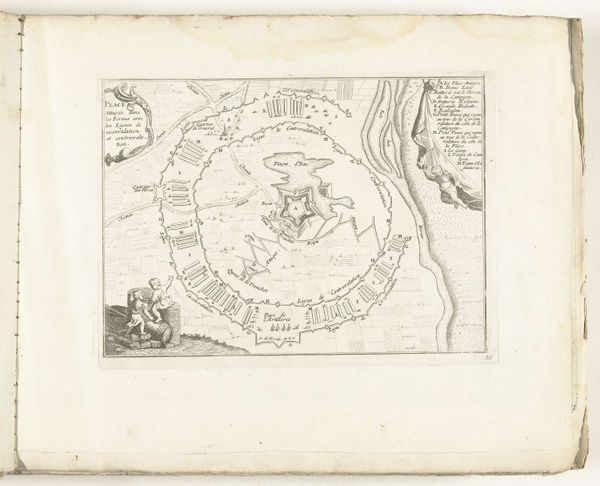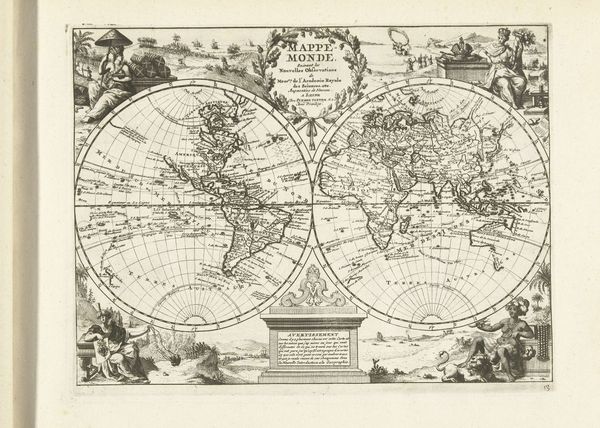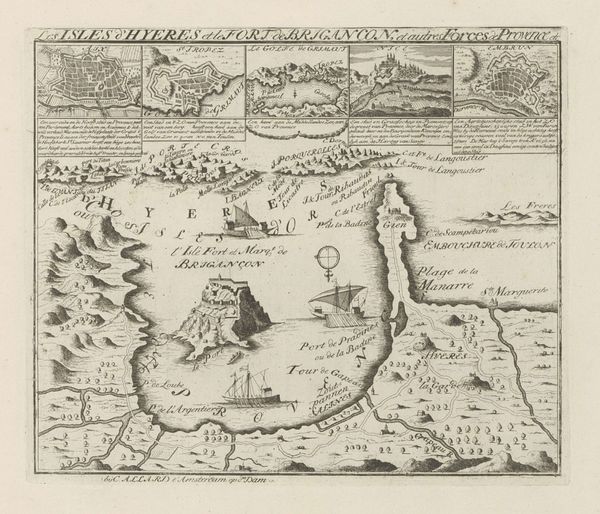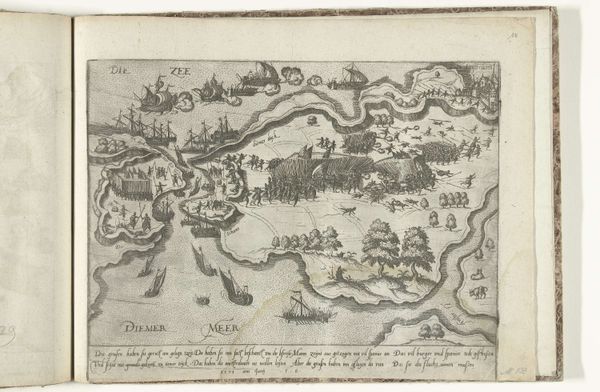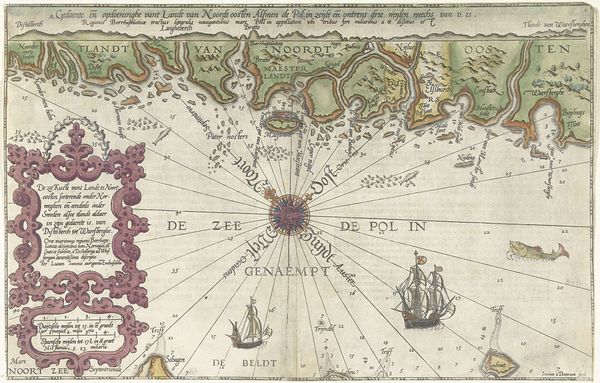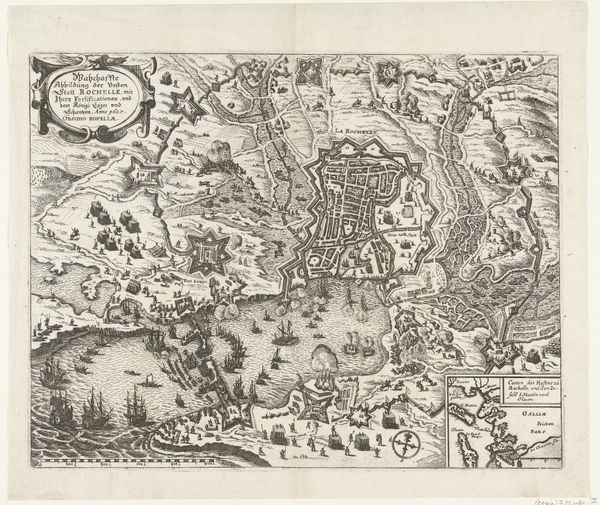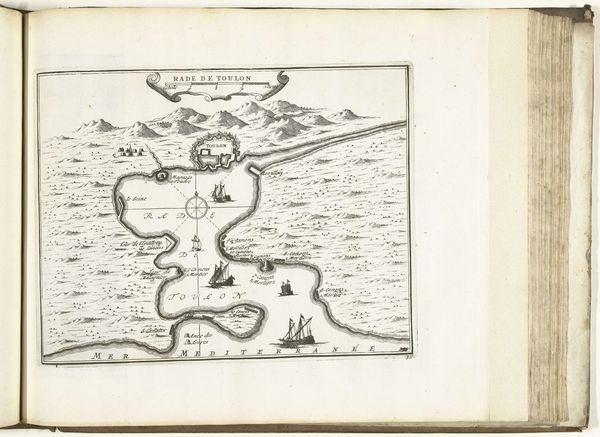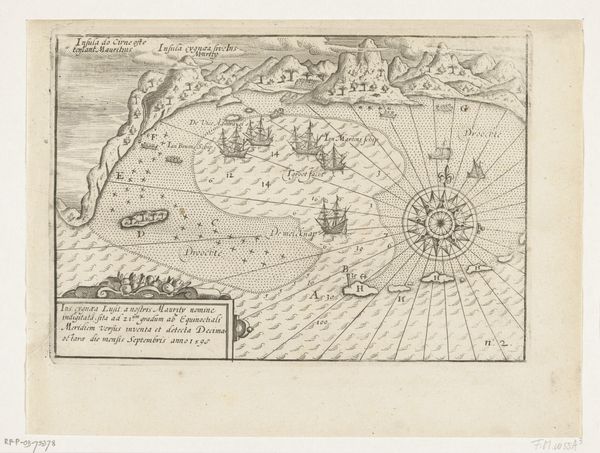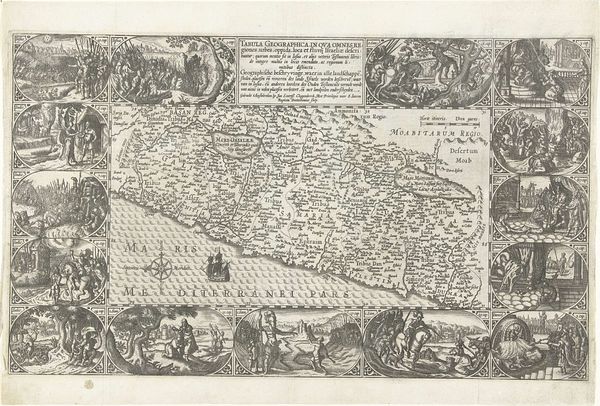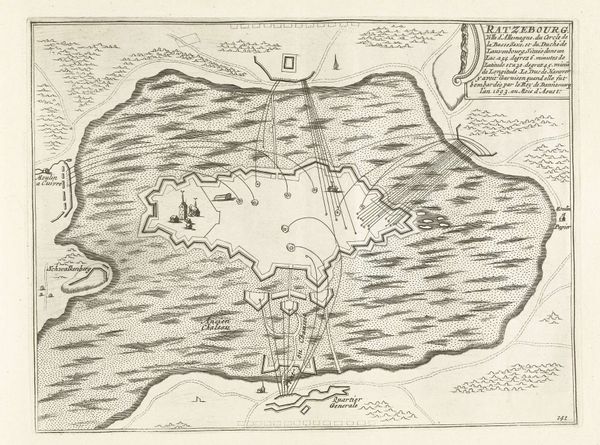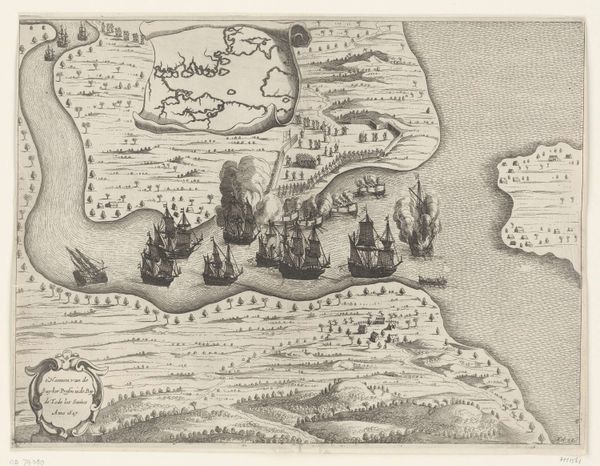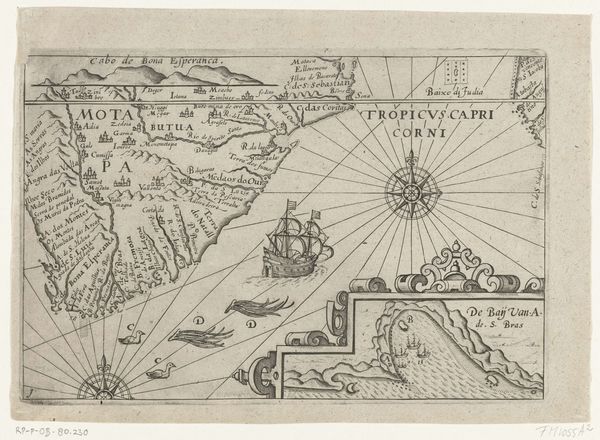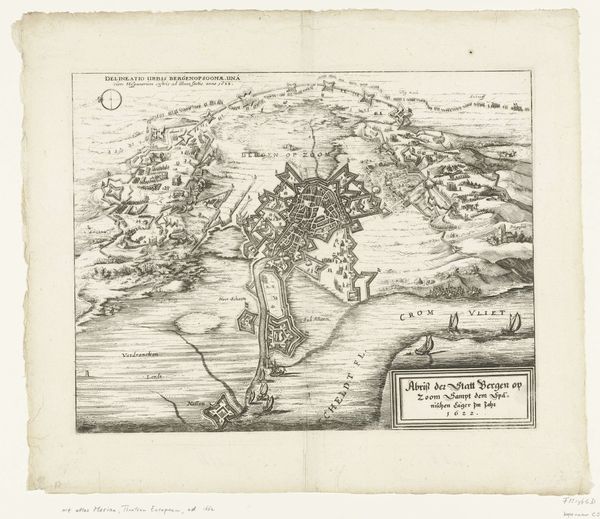
drawing, print, ink, engraving
#
drawing
#
baroque
# print
#
pen illustration
#
old engraving style
#
ink
#
history-painting
#
engraving
Dimensions: height 208 mm, width 282 mm
Copyright: Rijks Museum: Open Domain
Editor: This is "Schematische voorstelling van een denkbeeldig beleg, 1726," a pen and ink drawing, and engraving by an anonymous artist, here at the Rijksmuseum. It's like looking at a war plan from another dimension. What’s your interpretation of it? Curator: It's fascinating how these schematic representations served to both document and idealize warfare. The symmetry and order imposed on a siege—an act of violence and disruption—speak volumes about the period's desire to control and rationalize conflict. Look at how power dynamics are spatialized. Who is at the center, and who is surrounding them? Editor: The central fortress certainly commands attention. Curator: Exactly. And think about the role of cartography itself. Maps aren't neutral; they’re tools that can solidify claims to territory. In whose interest was it to create and disseminate this image? What ideas about military might were being reinforced? Also, what can we make of those cherubic figures in the corner—how do they comment on this military display? Editor: It's unnerving to see playful figures alongside such a calculated diagram of potential violence. It's as if war is just another game, detached from human cost. Curator: Precisely. By dissecting these layers – the visual language, the implied narratives, and the social context – we start to understand how even seemingly objective documents like maps can be deeply embedded in ideologies of power, class, and conflict. Do you see a potential dialogue opening up between the history this image depicts and the sociopolitical implications it creates? Editor: Yes, it highlights how images can normalize what would otherwise be viewed as unthinkable. It has opened my eyes. Thank you. Curator: My pleasure. Examining art through a lens of social responsibility gives artworks a different resonance and connects us to these complex issues today.
Comments
No comments
Be the first to comment and join the conversation on the ultimate creative platform.
